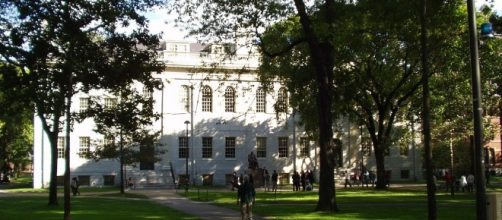Many progressives are excited to hear that Harvard's incoming freshmen class is more non-White than not. With a demographic break-up of 22.2 percent Asian, 14.6 percent Black, 11.6 percent Latino, and 2.5 percent Native American or Pacific Islander, this is Harvard’s most diverse class since its 1636 establishment. A total of 50.9 percent People Of Color now make up the majority of Harvard’s first-year population.
In spite of this on the surface welcoming happenstance, the problem with diversity, in particular where Ivy Leagues and other prestigious universities are involved, is that diversity is complicated and multifaceted.
The concomitant of this is that too often we end up paying more attention to identity rather than actual inequality.
Education is expensive
My first reaction to the excitable news was not one of disappointment, but of marked cynicism, my suspicion being rooted in a number of factors.
First, the goal of education, in my opinion, is for it to be both public and quality. Indeed, education should be affordable, that means not having to sell an arm and a leg to get into a good school – and to that end, education should always be valuable and productive to a student's needs.
I have always been aware that top colleges are many a time more affordable than state schools for poor students. Most prestigious institutions advertise relentlessly their ability to meet a high percentage of a student's financial needs.
These top schools want to spice up their college campuses with entitled rich kids. Thus, low-income students are an appreciated form of diversity.
But high-achieving, low-income students at top colleges are a bit like the token person of color in every other TV show in this instance. They're rare. Not only are poor students discouraged from ever applying to expensive colleges – over 80% of those qualified to attend the nation’s top colleges do not apply – poor folk simply do not have the resources for such things like prep schools and SAT classes that rich folk benefit from to meet the socially defined standard of academic giftedness.
Stories of “making it” and Black excellence make the news because they are infrequent, not because they are symbolic of progress.
The shock factor here is that Black excellence, and other examples of people of color beating the odds, are gradually becoming less of a rarity. Nonetheless, the rags to riches cliché is still making headlines. Not unexpectedly, economic misfortune is still a problem.
Black excellence
Taking this into consideration, we already know that Harvard's miracle is worth investigating. To note, Harvard is not the first top school or even Ivy League to gloat about its newfound diversity. Columbia, for example, is the most diverse Ivy League; Whites make up the minority versus people of color when it comes to Columbia enrollment. Perhaps Harvard’s victory is so popular because it is deemed the very best school to the general American public.
But while their success is new, their tricks – that of Harvard and all other prestigious colleges – are quite old.
Roughly two years ago a small group of students – Munira Khalif, Kwasi Enin, Harold Eekh, etc. – were accepted to all 8 Ivy League schools. They were all Black; but besides the most conspicuous factor, there was another larger common denominator: they were all the children of African immigrants, or immigrants themselves. This keeps happening.
To be sure, the idea is not that Black immigrants going to prestigious colleges is inherently an issue. Educational triumph should always be celebrated. The concern is that Black immigrants are attending these schools at remarkedly higher numbers than Black natives.
In contrast to what traditional White racists might think, blaming Harvard's diverse statistics on affirmative action, I would argue that affirmative action is not really doing its best for its purpose. Established to maintain equity in a nation well-known for slavery and institutional anti-black racism, it is instead helping wealthy immigrants go to Ivy Leagues.
Black immigrants go to select colleges at almost four times the rate of Black Americans, and first and second generation Black immigrants amount to 41 percent of all Black students at Ivy Leagues.
Finding the American dream
These rates would not be so noteworthy in direct and equal comparison to Black Americans. They are not, however. Black immigrants on average make more than Black Americans and are more likely to have a college or graduate degree than Black Americans and the US population as a whole.
The myth is that immigrants in pursuit of the American dream work harder. Research, conversely, shows that immigrant families do not value education any more than Black natives. Notwithstanding, in addition to having a stronger family structure, African immigrants sometimes come from very wealthy backgrounds that might include an archive of educational and career achievements or familial royalty.
In general, Black immigrants are a self-selecting group, who are allowed to immigrate with more formal education and professional experience, these details also benefit when it comes to immigration affairs.
Black immigrants do have an essential advantage over Black Americans. White administrations (and White people en masse) are more comfortable with Black immigrants.


